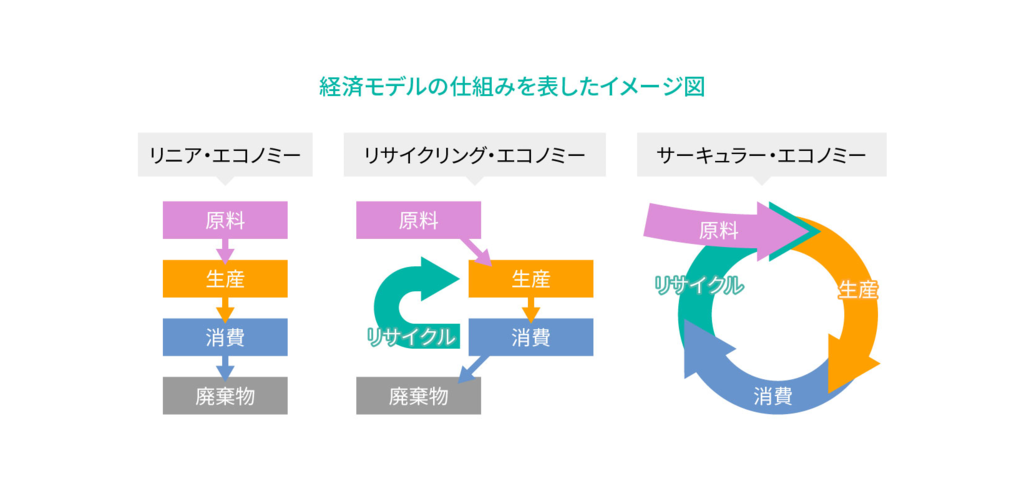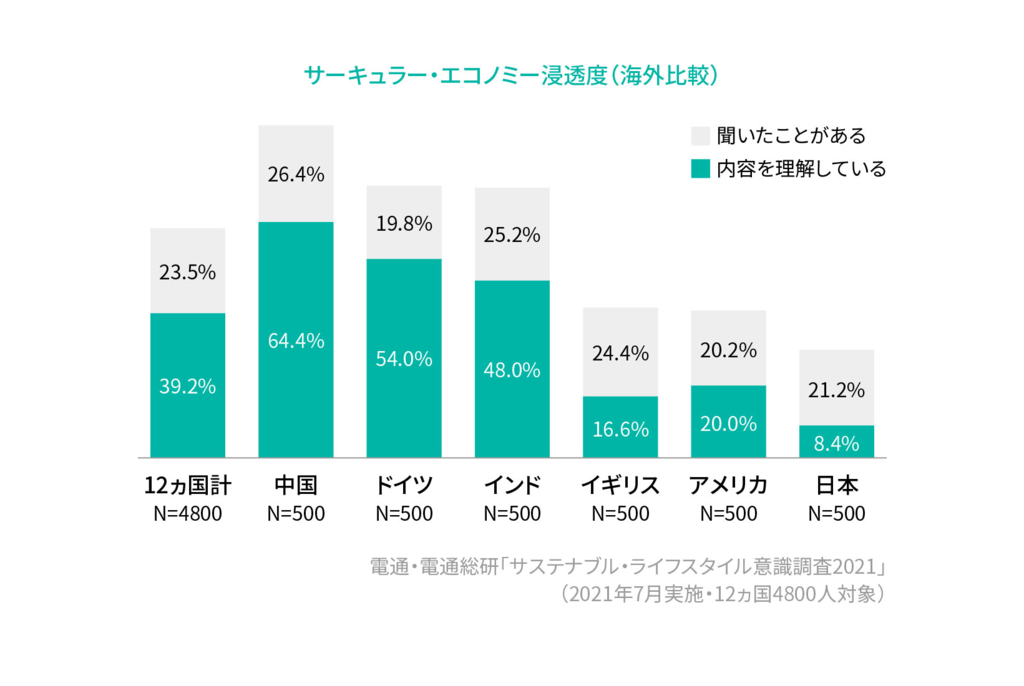Note: This website was automatically translated, so some terms or nuances may not be completely accurate.
[Sustainability Frontline] What is the "Circular Economy"? Key Points to Consider When Implementing It (Part 1)
As concepts like sustainability and SDGs gain traction, the entire world is moving toward "carbon neutrality," demanding that companies adopt more environmentally conscious practices than ever before. Amidst this, one keyword currently attracting significant attention is the "circular economy." Some readers of this article may be wondering, "What exactly is the circular economy?" Others might be familiar with the term but grappling with the question, "How should our company approach it?" Still others may be seeking more concrete solutions, thinking, "We know we need to advance environmental initiatives, but we don't know where to start."
This time, we spoke with Mineko Hotta, an SDGs consultant at Dentsu Inc. Team SDGs, about the basics of the circular economy, implementation steps, and key considerations when pursuing it. We hope this helps deepen understanding of the circular economy, still considered relatively unfamiliar in Japan. This interview is presented in two parts.
The Circular Economy: A Business Model That Circulates Resources
Q. Before we start talking about the circular economy, could you tell us about your career, Ms. Hotta? It seems you have quite diverse experience.
Hotta: Yes. I currently work at Dentsu Inc., but I originally worked as a product designer for communication devices at a major manufacturer. After that, I moved to a telecommunications company, where I worked in a position directing and making decisions about overall design. Next, I joined a global telecommunications equipment manufacturer, where I was again responsible for product design, product branding, and marketing.
Since my student days, I've taken courses on "materials" and studied them extensively. Working at manufacturers also gave me practical experience in manufacturing, design, and understanding how factories operate. In the telecommunications industry, I worked extensively on "telecommunications × design." As I'll discuss later, implementing a circular economy in society requires "collecting" unwanted items from users. This necessitates creating incentives and delivering them to users via apps and similar methods. I feel my experience in the telecommunications industry is incredibly valuable for my current work.
I work under the title of "Business Designer," but the foundation of this role is the diverse experience I gained across companies with different business models and environments: "major domestic manufacturers" versus "global manufacturers," "manufacturers" that make and sell products versus "telecommunications carriers" that generate revenue through services.
Now, working at Dentsu Inc., I see myself as having crossed over from the realm of "creating" into the realm of "communicating." I believe we no longer live in an era where simply creating a good product or service guarantees its use or purchase. Rather, we must consider "communication" from the very moment of "creation." Adopting a perspective where product development is reverse-engineered from the communication strategy can fundamentally transform the user experience.
On the other hand, simply improving communication—the "conveying" part—won't solve a client company's management challenges. That's why I believe it's crucial to firmly establish a communication perspective before stepping into the realms of product development and UX. Recently, I've also had more opportunities to work with client companies' research institutes. We're tackling how to materialize research outcomes and connect them to business.
Q. Mr. Hotta, let me ask you again. What exactly is the concept of the circular economy?
Hotta: Literally translated, "circular economy" means a "recycling-based economy." The Ellen MacArthur Foundation, an international organization promoting the circular economy, defines its three core principles as:
- Design out waste and pollution
- * Keep products and materials in use
- Regenerate natural systems
Traditionally, the "recycling economy" has been promoted, which involves reusing
Traditionally, the "recycling economy" has been promoted, focusing on reusing or recycling waste to extend product lifespans as much as possible. The circular economy is a further evolution of this concept. It involves designing products and materials from the manufacturing stage with the premise of collecting and reusing them once they become obsolete, minimizing the input of new resources. It is a business model that continuously uses limited resources and minimizes waste.
As methods to avoid wasting resources, the "3Rs" – "Reuse (using items multiple times without discarding them)," "Reduce (minimizing waste volume)," and "Recycle (reprocessing used items into new resources)." However, the Circular Economy places additional emphasis on the "5R" approach, incorporating "Repair (continuing to use items through repair, and designing them for this purpose from the start)" and "Refuse (avoiding purchasing or accepting items that will eventually become waste)." By effectively utilizing limited resources through various approaches, we can build a circular economy.

Why is the Circular Economy gaining attention?
Q. Why is the circular economy gaining attention now?
Hotta: Pursuing a circular economy reduces environmental impact, making it an effective approach for implementing SDGs and building a sustainable society. But more importantly, it presents businesses with opportunities to create new business models. The entire world is now moving toward "carbon neutrality." This means, for example, moving away from fossil fuels and toward renewable energy. This represents a major transformation for industry. The EU has already announced the introduction of a border carbon tax (a tax levied on imports based on CO2 emissions), meaning traditional manufacturing business models may no longer be viable.
Amidst this, the circular economy model has gained traction. This shifts business models from the traditional "sell and done" approach to one of "collect from users and reuse." Herein lies significant innovation. In other words, promoting the circular economy not only reduces environmental impact in line with the demands of the times but also increases the potential to evolve business models and generate revenue in new ways. When considering how to innovate our businesses to adapt to changing times, the business model presented by the circular economy offers a major opportunity.
That said, the "Sustainable Lifestyle Awareness Survey 2021" conducted by Dentsu Inc. and DENTSU SOKEN INC. found that only about 8% of Japanese respondents answered that they "understand the concept of the circular economy." It seems fair to say that Japan is still in the early stages of serious implementation.

The circular economy builds upon traditional "recycling economies" and the "3Rs" (Reduce, Reuse, Recycle), designing business models premised on the continuous circulation of resources. It is gaining attention not only for reducing environmental impact but also as a potential catalyst for business innovation. In Part 2, we will discuss specific steps and key considerations for companies aiming to implement the circular economy.
The information published at this time is as follows.
Was this article helpful?
Newsletter registration is here
We select and publish important news every day
For inquiries about this article
Author

Hotta Mineko
Dentsu Live Inc.
Circular Economy Management
After working as a product designer for a major electronics manufacturer, he oversaw product design and UX design at a telecommunications company. He then served as a manager for product branding, marketing, and PR targeting the Japanese market at a global manufacturer. After joining Dentsu Inc., he was seconded to Dentsu Live Inc. in 2025 and is currently active primarily in the circular economy field. He has received numerous awards, including the iF Design Award, Red Dot Design Award, and Good Design Award. Certified Human-Centered Design Specialist by HCD-Net, Certified Ergonomics Specialist by the Japan Ergonomics Society. Good Design Award judge from 2022 to 2025.

